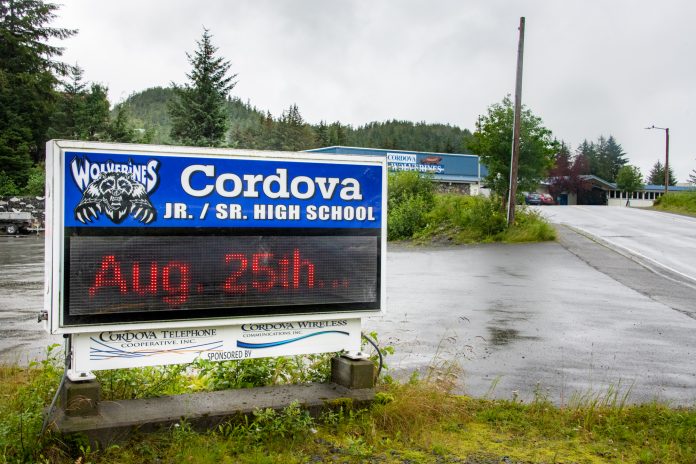
Seventh and eighth graders at Cordova Jr./Sr. High School are competing in NASA’s national App Development Challenge (ADC).
The ADC is one of eight Artemis Student Challenges that students across the country are participating in. The challenges present students with technical problems in deep space exploration missions, and students contribute their ideas to the project.
The elective has nine students, and consists of two teams of students competing in the challenge. Many of the students have done robotics through middle school, and said this helped prepare them for the challenge experience. But for all but two students, this is their first time developing an app.
This year the development challenge is to research and then design an app to visualize one of five Artemis III landing regions that are around the Moon’s South Pole. This app design challenge was created in collaboration with NASA’s Space Communications and Navigation.
The junior high students in an interview on Monday afternoon described this learning process as “interesting,” and said they have been enjoying the class.
One student, Amelia Niles, said that while working on this project “everything is really new to me.”
“It’s interesting in a way that is a little bit overwhelming, but also … opens a whole other realm of possibilities in the future,” she said.
Niles said that she was originally drawn to the class because of her lack of knowledge about computers.
“What we’ve learned in the first few weeks has really greatened my understanding of computer science, and the fact that we have another two months, I’m sure we’ll be learning a whole lot more,” she added.
Teacher Krysta Williams discovered the open call to STEM educators to join this challenge through a web portal for educators created by NASA, and it’s the first time CHS has engaged in one of NASA’s challenges. Williams coordinated a similar program for the Girl Scouts over the summer that was supported by the school district.
Williams said there is an “interesting combination of collaboration and competition” in the class, as each team is competing individually in the NASA challenge but also working together as a class to learn the new material.
Williams said there are around 75 other schools across the country participating in this challenge.
Through this project students have had the opportunity to connect with and learn from NASA coders and engineers through the weekly Wednesday office hours. Students have the opportunity to pose their questions to NASA’s team. Students said this has been helpful and they were surprised how easy it was to connect with them.
The results of the challenge will directly relate to upcoming planning and training for missions. ADC projects, like the one students are involved in, could help NASA’s endeavors in landing American astronauts on the moon — which could include the first woman and first person of color.
The challenges are led by the Johnson Space Center’s Office of STEM Engagement in Houston and is part of the agency’s Next Gen STEM Project.
The final project will be presented via video made by the students to NASA. Videos will be reviewed by NASA scientists and engineers, and select teams will then be interviewed. NASA will then select the top teams to visit NASA’s Johnson Space Center in Houston.
And how do students feel about their chances to be selected for their work in the challenge? Extremely positive, they said, they’re determined to be selected as one of the top teams.
The course will run through the semester until Dec. 13.












